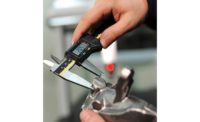“In God we trust; all others must bring data.”— W. Edwards Deming
“It is a capital mistake to theorize before one has data.” — Arthur Conan Doyle
“Data are becoming the new raw material of business.” — Craig Mundie
Quality is based on a series of facts and statistics collected and analyzed. To produce a quality product—and continue producing a quality product—you need data. However, data you can trust doesn’t simply appear. You need to collect data and then analyze it properly. Luckily, there are several tools available to you for this use. For the sake of this article, we will look at three.
TOOLS AND TEMPLATES
If you’re looking for more information about data collection and analysis and other tools, visit asq.org/learn-about-quality/tools-templates.html. The web page includes spreadsheets for the following tools:
- Box and whisker plot
- Check sheet
- Control chart
- Design of experiments
- Histogram
- Scatter diagram
- Stratification diagram
Control Chart
In last month’s column, control charts were mentioned as a way of introducing the Shewhart Bowl and Deming’s red bead experiment. The chart itself allows you to collect data on your organization’s processes and graphs the changes within a process over time—so it can serve many goals. The control chart is considered one of the seven basic quality tools. Use a control chart when you want to:
- Find and correct process problems as they occur.
- Predict the expected range of outcomes.
- Determine if a process is stable or unstable.
- Analyze whether patterns of process variation stem from special (non-routine) or common (built into the process) causes.
- Determine whether to make fundamental changes or prevent specific problems.
Scatter Diagram (Also Scatter Plot and X-Y Graph)
You are trying to solve a problem. Your team has brainstormed cause and effects and you’ve completed a fishbone diagram. But are you sure your causes and effects are related? Use the scatter diagram and objectively determine the relation between a particular cause and effect.
In “The Quality Toolbox, Second Edition” (ASQ Quality Press, 2005, pp. 471–474), Nancy Tague explains that a scatter diagram “graphs pairs of numerical data, with one variable on each axis, to look for a relationship between them. If the variables are correlated, the points will fall along a line or curve. The better the correlation, the tighter the points will hug the line.”
The relation between the data is extremely important, so use the scatter diagram to determine whether two effects appearing to be related occur with the identical cause.
Check Sheet (Also Defect Concentration Diagram)
Compared to the control chart, scatter diagram, and other data collection and analysis tools, the check sheet is rather generic. Because the check sheet can be adapted for many purposes, this simple tool can reap powerful benefits. Like the control chart, the check sheet is considered one of the seven basic quality tools. Here is the six-step procedure:
- Decide what event or problem will be observed. Develop operational definitions.
- Decide when data will be collected and for how long.
- Design the form. Set it up so that data can be recorded simply by making check marks, X’s, or similar symbols and so that data do not have to be recopied for analysis.
- Label all spaces on the form.
- Test the check sheet for a short trial period to be sure it collects the appropriate data and is easy
- to use.
- Each time the targeted event or problem occurs, record data on the check sheet.
To download a template and learn more, visit asq.org/learn-about-quality. The check sheet, control chart, and scatter diagram are powerful, versatile tools to make sure your data collection and analysis occur effectively—and productively.







